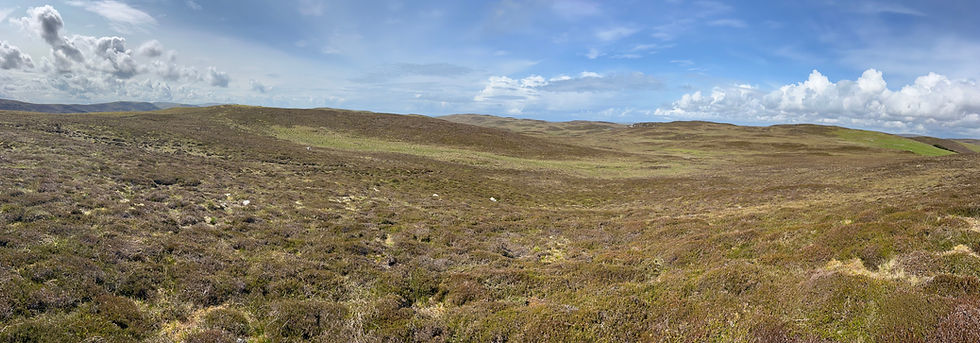Historical Profile - Gilbert Goudie
- Stephen Jennings
- Oct 20, 2019
- 3 min read

Gilbert Goudie was born in Clumlie on the 23rd of April in 1843, moved with his family to Edinburgh in 1853 and died there on January 8th, 1918. A prolific writer and active antiquarian, he was Treasurer of the Society of Antiquaries of Scotland and, among many other works, he produced the first translation of The Orkneyinga Saga, The Diary of the Reverend John Mill and The Celtic and Scandinavian Antiquities of Shetland. A collector of original source documents and artefacts, his frequent travels back to his native Shetland enriched our understanding of the landscape and the people.
Involved in anything interesting and everything Shetland, Gilbert Goudie had a particular affinity for St Ninian’s Isle. It was here he found the Ogham-inscribed St Ninian’s Stone in 1875 among a scene of ‘desolation and silence except for the moaning of the waves, the screeching of sea fowl, and the bellowing of cattle…[where] there was some difficulty in prosecuting a search on the site, the cattle contesting possession of the ground, and tossing the skulls and trampling the bones which are strewn about the sand-blown surface, or protrude from beneath’. Recognising its importance, he removed it and had it heading south the next day where it now resides in the National Museum of Scotland. Unfortunately, two other well-weathered fragments with Ogham inscription were gone by the time he returned and have not been found since.
St Ninian's Isle is merely one of the more colourful of his expeditions around Shetland. He also conducted a partial excavation and reconstruction of Clumlie Broch, ostensibly his boyhood garden. Known as the ‘Brae of the North Yard’, the hillock’s peculiar shape led he and Ordnance surveyors to conclude it was a broch and so in July of 1888 he took an opportunity to confirm. With the help of local workmen, they conducted a series of digs followed by seasons in 1890 and 1891. In addition to the general dimensions and layout, they found a variety of artefacts including whorls, hammerstones and numerous pottery sherds. It was during this initial visit in 1888 that he also partially excavated the broch, now widely recognised as a dun, on the Loch of Brindister.
His initial recognition and cataloguing of artefacts in Shetland were an important contribution to our early understanding of origins and sites. For example, during his time broch debates raged as well, perhaps more passionately than they do now, and much of it was centred along time period of construction and by whom (some believing they were Norse creations). Goudie, understanding the diagnostic nature of prehistoric artefacts, rightly perceived the brochs were as early as ‘the commencement of the Christian era, or earlier’. Moreover, he pushed closer scrutiny of ‘roughly chipped’ stone tools in addition to polished tools, something we would recognise as an everyday use item, recalling an enormous hoard of coarse tools and fragments found next to his family home in 1863.
Culturally, his importance to Shetland is as extensive. He spent several years collecting stories of folklore, family histories and dug deeply into the local language and place names. What material records he couldn’t collect he transcribed and was meticulous in seeking corroborative evidence where possible. A wonderful case is that of the Reverend John Mill where he both presented the original document of Mill’s diary in as close an approximation to the original as possible whilst providing supporting evidence and well-thought arguments to prove or refute where necessary. Without doubt his more lasting legacy, especially farther afield, is the first translation of The Orkneyinga Saga. Despite its shortcomings as an historical document, it’s an immensely important cultural document.
Gilbert Goudie’s own words best sum up his passion and our short profile: “The islands may be remote and they may be bare; but I claim for them a rich and romantic interest that is essentially their own.”
To read more of Gilbert Goudie's work we would suggest, if possible, a visit to the Shetland Museum and Archives where an impressive collection of his documents, both compiled and authored, can be found including his four volume autobiography.
On the web, choose the following links:
There is always some miscellany available out there as well.







Comments